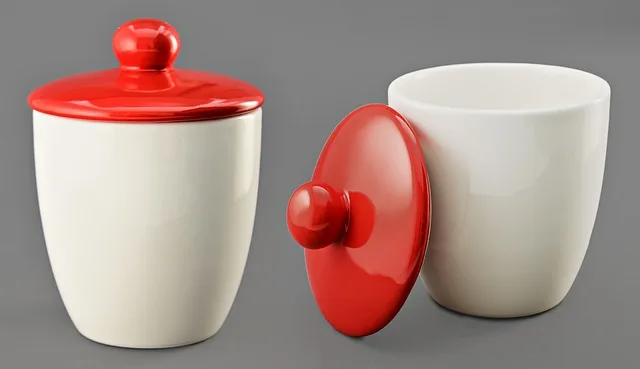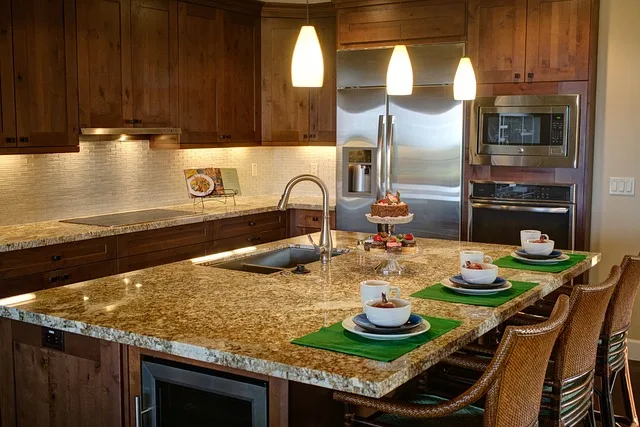First things first, gather your tools. You’ll need a level, a drill, screws, and a stud finder. Think of these tools as your trusty sidekicks on this DIY adventure. Start by locating the studs in your wall; they’re like the backbone of your kitchen, providing the support your cabinets need. Use your stud finder to mark these spots with a pencil.
Next, measure the height where you want your cabinets to sit. A good rule of thumb is to leave about 18 inches between the countertop and the bottom of the cabinets. This is like giving your kitchen some breathing room! Once you’ve got your measurements, it’s time to mark the spots on the wall where the cabinet brackets will go.
Now, here comes the fun part—hanging the cabinets! It’s a two-person job, so grab a friend or family member to help. Lift the cabinet into place and align it with the marks you made earlier. Use your level to ensure it’s straight; nobody wants a crooked cabinet! Once it’s positioned just right, drill in the screws to secure it to the wall.

Repeat this process for each cabinet, and before you know it, you’ll have a stunning kitchen that looks like it was done by a pro. Plus, you’ll have the satisfaction of knowing you did it all by yourself! So, roll up your sleeves and get ready to impress.
DIY Delight: Mastering the Art of Hanging Kitchen Cabinets Like a Pro!
First things first, let’s talk tools. You don’t need a whole workshop to get started—just a few essentials like a level, a drill, and some sturdy screws. Think of these tools as your trusty sidekicks on this DIY adventure. They’ll help you navigate the ups and downs of cabinet installation, ensuring everything is straight and secure.
Now, let’s dive into the nitty-gritty. Before you even think about lifting those cabinets, it’s crucial to measure your space. Picture this: you wouldn’t try to fit a square peg in a round hole, right? The same goes for your cabinets. Measure twice, cut once—this old adage rings true in the world of DIY.
Once you’ve got your measurements down, it’s time to mark your wall. Use a pencil to outline where each cabinet will go. This is like creating a roadmap for your project, guiding you every step of the way. And don’t forget to use a stud finder! Hanging cabinets on studs is like anchoring a ship; it keeps everything steady and secure.
No Contractor? No Problem! Your Ultimate Guide to Hanging Kitchen Cabinets Yourself
First things first, gather your tools. You’ll need a drill, level, stud finder, and a trusty tape measure. Think of these tools as your kitchen cabinet superheroes, ready to save the day! Now, before you start drilling holes like a mad scientist, take a moment to plan your layout. Visualize how you want your kitchen to look. It’s like painting a picture; you wouldn’t just throw paint on a canvas without a plan, right?
Next, find those studs in your wall. Trust me, this step is crucial! Hanging cabinets on drywall alone is like trying to balance a stack of books on a wobbly table—it’s just not going to end well. Use your stud finder to locate those sturdy beams, and mark them. This is where your cabinets will find their home.
Now, let’s talk about leveling. Picture this: you hang your cabinets, step back, and they’re all crooked. Yikes! To avoid that nightmare, use a level to ensure everything is straight. It’s like making sure your cake is perfectly frosted—nobody wants a lopsided dessert!
Once you’ve got everything measured and marked, it’s time to hang those cabinets. Start with the upper ones, and don’t be afraid to ask a friend for help. It’s like lifting weights; having a buddy makes it easier and way more fun! Secure them to the studs, and voilà! You’re well on your way to a stunning kitchen transformation.
Transform Your Kitchen: Step-by-Step Tips for Hanging Cabinets Without Hiring Help
First things first, gather your tools. You’ll need a level, a drill, screws, and a stud finder. Think of these tools as your trusty sidekicks on this DIY adventure. Start by measuring the height where you want your cabinets to hang. A good rule of thumb is to leave about 18 inches between the countertop and the bottom of the cabinets. Use a pencil to mark your measurements on the wall—this is your blueprint!
Next, locate the studs in your wall using the stud finder. Why? Because hanging cabinets on studs is like building a house on a solid foundation. It ensures your cabinets won’t come crashing down when you load them up with dishes. Once you’ve found the studs, mark their locations.
Now, it’s time to attach the mounting brackets. This is where the level comes in handy. You want your cabinets to be straight, not leaning like a drunken sailor! Secure the brackets to the wall, making sure they’re aligned with your stud marks.
Finally, lift those cabinets into place. It might take a bit of muscle, but don’t worry—you’ve got this! Once they’re up, double-check with the level one last time. Tighten the screws, and voilà! You’ve just transformed your kitchen without breaking the bank or calling in reinforcements. How satisfying is that?
From Drab to Fab: How to Hang Kitchen Cabinets on a Budget
First off, consider a little DIY magic. Painting your cabinets can work wonders! A fresh coat of paint can breathe new life into tired wood. Choose a trendy color that reflects your personality—maybe a soft sage green or a bold navy blue. It’s like giving your cabinets a new outfit; they’ll feel brand new! Just make sure to prep the surfaces properly, and you’ll be amazed at the transformation.
Next, let’s talk hardware. Swapping out old knobs and handles for chic, modern ones is like adding jewelry to an outfit. It’s a small change that makes a big impact. Look for sales or shop at discount stores to find stylish options that won’t cost a fortune. You’ll be surprised how much a little bling can elevate your kitchen’s vibe.
Now, if you’re feeling adventurous, consider open shelving. Removing some cabinet doors can create a more open and airy feel. Plus, it’s a great way to showcase your favorite dishes or quirky kitchen gadgets. Just think of it as a way to display your personality—like a mini art gallery right in your kitchen!
Lastly, don’t underestimate the power of organization. Invest in some budget-friendly storage solutions like baskets or drawer dividers. A tidy kitchen not only looks better but also makes cooking a breeze. It’s like giving your kitchen a spa day—everything feels refreshed and in its place.
Unlock Your Inner Handyman: A Beginner’s Guide to DIY Kitchen Cabinet Installation

First things first, gather your tools. You’ll need a drill, a level, a measuring tape, and some patience. Think of these tools as your trusty sidekicks on this DIY journey. Just like Batman has his gadgets, you’ll have your gear to help you conquer the cabinet installation challenge.
Next, measure your space. This is where the magic begins! Picture your kitchen as a blank canvas, and you’re the artist. Accurate measurements are crucial; they’ll ensure your cabinets fit like a glove. No one wants a cabinet that’s too big or too small, right?
Once you’ve got your measurements down, it’s time to hang those cabinets. Start with the upper cabinets, as they’re lighter and easier to manage. Use a level to make sure they’re straight—nobody wants a crooked cabinet that looks like it’s had one too many drinks!
As you install, think of it as building a relationship. You’re not just slapping cabinets on the wall; you’re creating a space that reflects your style and personality. Each screw you tighten is like a promise to yourself that you can do this.
And don’t forget about the finishing touches! Adding hardware like knobs and pulls can transform your cabinets from ordinary to extraordinary. It’s like putting on the perfect accessory to complete an outfit. So, roll up your sleeves, embrace the challenge, and let your inner handyman shine!
Frequently Asked Questions
What Tools Do I Need to Hang Kitchen Cabinets?
To hang kitchen cabinets, you will need a stud finder to locate wall studs, a level to ensure cabinets are straight, a drill for making holes, screws for securing the cabinets, a measuring tape for accurate placement, and a pencil for marking. Additionally, a screwdriver and a clamp can be helpful for stability during installation.
How Do I Ensure Cabinets Are Level and Aligned?
To ensure cabinets are level and aligned, start by using a level tool to check each cabinet’s horizontal and vertical alignment. Adjust the cabinet legs or shims as needed to achieve a level surface. For alignment, use a straight edge or measuring tape to ensure the edges of adjacent cabinets are flush. Secure the cabinets together and check alignment again before finalizing installation.
How Do I Measure for Proper Cabinet Placement?
To ensure proper cabinet placement, start by measuring the height, width, and depth of the space where the cabinets will be installed. Use a level to check for evenness and mark the desired height on the wall. Measure the distance from the floor to the bottom of the cabinets and ensure there is adequate clearance for appliances and countertops. Additionally, consider the layout of the room and any obstructions such as windows or doors. Accurate measurements will help achieve a functional and aesthetically pleasing cabinet arrangement.
What is the Best Method for Securing Cabinets to the Wall?
To securely fasten cabinets to the wall, use wall anchors or brackets designed for the cabinet’s weight. Locate wall studs for maximum support, and use screws that penetrate both the cabinet and the studs. For added safety, consider using anti-tip kits that prevent the cabinet from tipping over, especially in homes with children or pets.
What Common Mistakes Should I Avoid When Hanging Cabinets?
When hanging cabinets, avoid common mistakes such as not using a level, failing to secure to wall studs, miscalculating the height, neglecting to pre-drill holes, and overlooking the need for proper spacing. Ensuring accurate measurements and using the right tools will lead to a more stable and visually appealing installation.